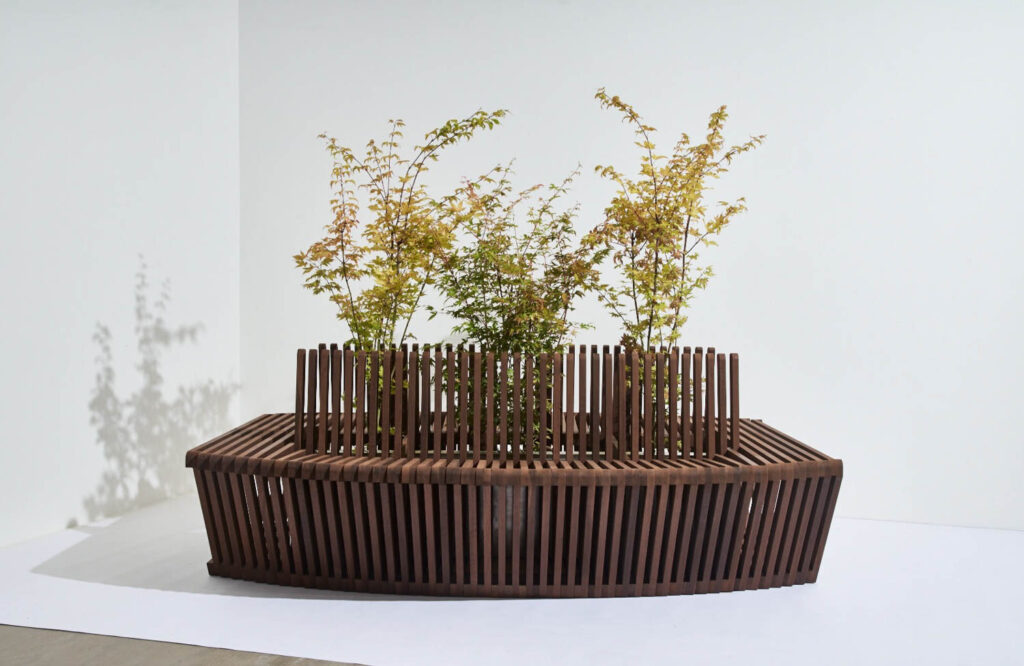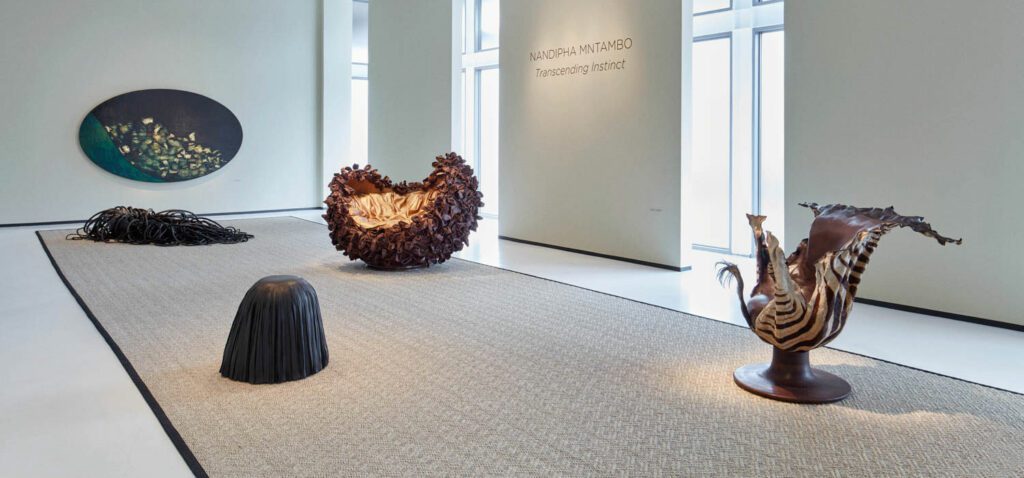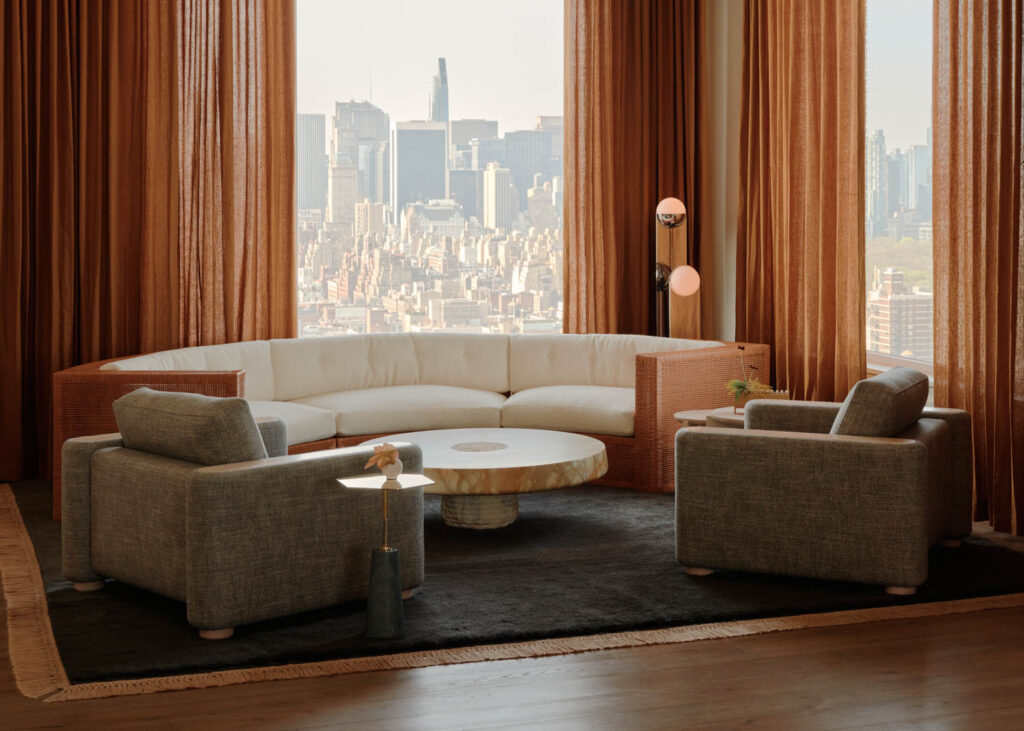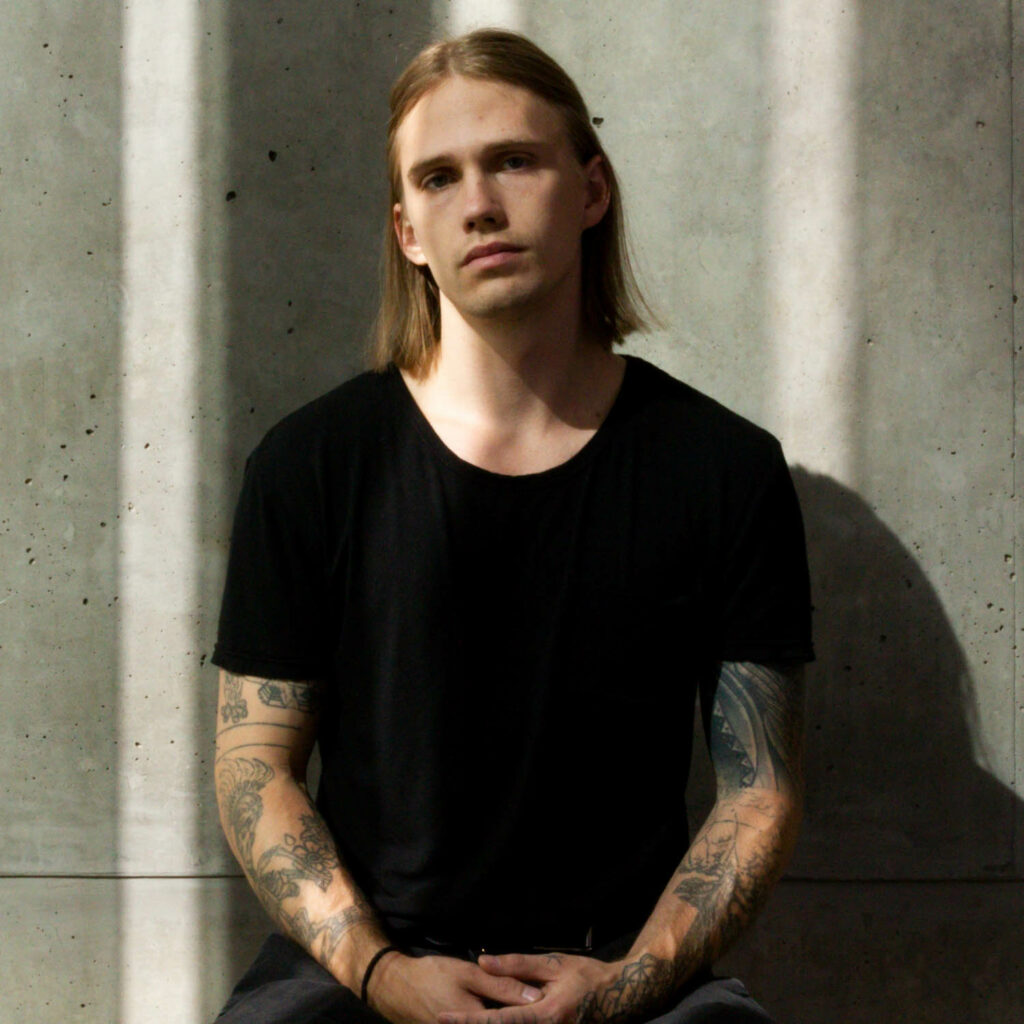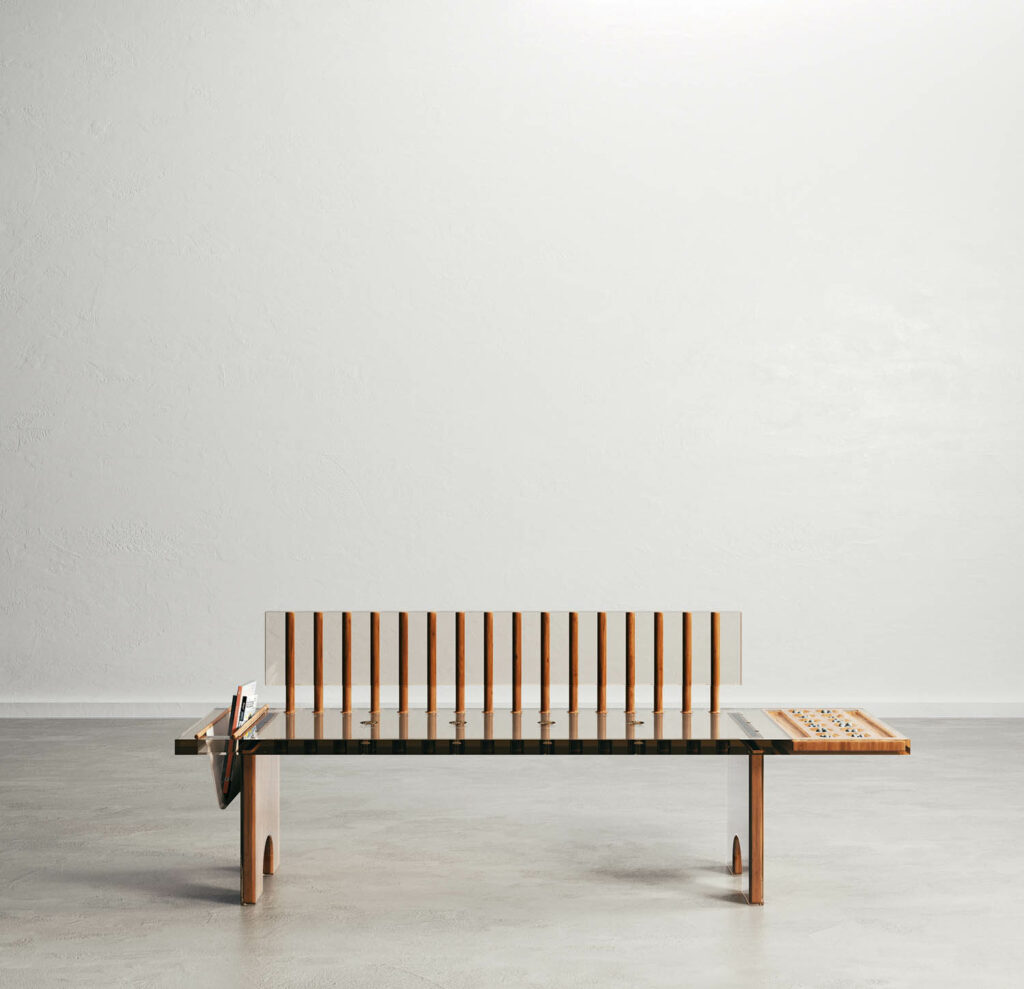10 Questions With… Creative Director Porky Hefer
For Porky Hefer, neither artist nor designer fit as a label. “Designers used to call me an artist and artists call me a designer,” he said. Rather, he identifies as a creative director. Hefer, who has no formal training in design, says his creative process isn’t technical; however, for more than a decade, he has brought to life avant-garde works inspired by nature. While his designs are conceptual, three-dimensional forms; Hefer’s envisage of biomimicry is spontaneously powerful. His mission is to uncover what exists beyond the ever-present human gaze and explore the visceral lives of animals, organisms, and life forms is why he started his brand Animal Farm, and later founded Porky Hefer Design.
Hefer’s recent solo exhibition, “Volume IV. Chaos Calamus – Interspecies Reciprocal Altruism,” at the Southern Guild in Cape Town, South Africa centered around unraveling the existence of amoeba. His works on display explored how the creatures interact with their symbiotic nature of movement. To illustrate this idea, Hefer radicalized different materials, including wood, rattan and leather, displaying them in an oversized form during the course of the show, which commenced April 20, 2023.
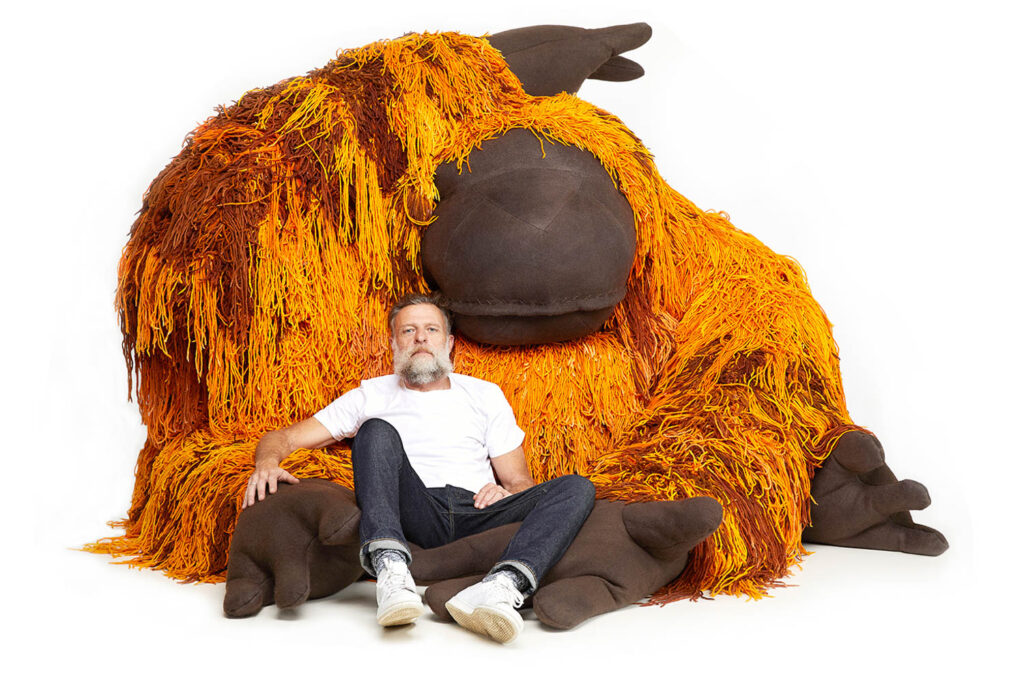
Interior Design: Where does your career story begin?
Porky Hefer: I started out in advertising, and then direct marketing and internet advertising started coming. Digital advertising really destroyed our budgets, and also the whole system. [Hefer resigned from that job and started his own advertising consulting agency, Animal Farm.] Even then, we had products that you couldn’t really say anything about. So I decided I should be designing products that I know are different, and that I can sell. A lot of furniture design is based on trends and capitalizing on trends and following trends. I was very lucky because in South Africa, it is difficult to do product design because you don’t have a mass market like you do have in Europe or the east. I arrived at the same time as limited edition design, which was far more interesting for me. Also, just the right time with meeting Kevin and Judy from Southern Guild so we managed to get into quite a strong place quite quickly, as opposed to other areas where South Africa has to compete against an existing group of countries or people who are dominating a design scene. In limited edition design, it was basically free for all.
ID: How would you describe your entry into the design world?
PH: It felt accidental though also natural. My wife was into design, she’s from Turkey, and she introduced me to an international flavor as opposed to being merely South African. It was 2010 when I really started getting it right. And that was with Southern Guild at the Johannesburg Art fair. I did my first presentation with them there and realized that I had to have a good piece in order to stand out amongst artists. That’s when I came up with my first name. My benefit from advertising is that most product designers come up with a product—that’s what their skill is. But I can come up with a concept, think about the target market that I’m trying to reach, and where it’s going to. I consider my context. I think in a way that’s more like an advertising brief rather than a job where I make a product. It’s a story: Where does it go? I’m trying to create something which is a lot more conceptual, I suppose, which is closer to art.
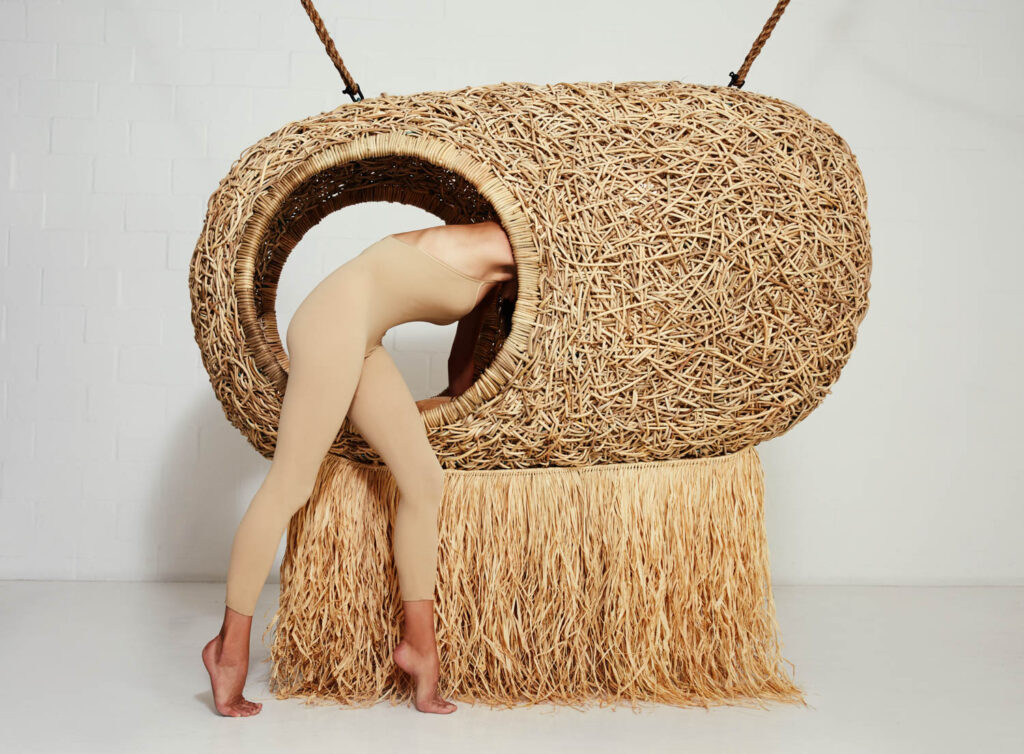
ID: Why are you so drawn to create architectural designs inspired by animals?
PH: As a designer from Africa, your immediate reaction is to delve into those parts of culture which are different to the western world and the northern hemisphere. It’s amazing. But then slowly, as this sort of appropriation movement got momentum, I started questioning myself and my source materials and source inspirations. So what I realized is that the one culture that’s always been around me in South Africa, has been access to nature. And that’s something that I had from a very early age. We were always on a farm, always with wild animals or tame animals. I was always interacting with animals. And I realized that that’s the thing that is strongest inside me as a South African—my connection to animals and wildlife and nature. So I very early on focused on that. As you master the elements and the land and the animals, then you start to tune into this system and start understanding and seeing it more, and respecting it more.
ID: The texture of your works make it seem like there is an unearthly inspiration, is that true?
PH: Yeah, I’m glad you do think that; I’m a big Sci-Fi fan. I read that when early Sci-Fi started, people made things up because they didn’t know anything about the moon—they had no information about other worlds. They went into nature and started studying it and seeing social interactions—the way ants work in an ant colony, for example. That’s where they got their source material for the future. I had an amazing reaction when someone came up to me said: “I love your work, the thing is that I can’t identify where it’s from. It looks like it’s from another world.” For me, that was the biggest compliment I could ever get. Because, yes, that’s what I’m trying to do—to illustrate the world beneath us and also in front of us that no one looks at. We’re so continually obsessed with humanity and human achievements that we rarely understand how amazing the little things are that go on in every tree. I’m glad that “you’ve never seen it before” comes around, because after advertising, I got obsessed with trying to be original as opposed to derivative.
ID: Do you work with artisans to bring these designs to life?
PH: I work with a system. In most situations, we come up with an idea and then we set up a system to produce the idea. And very often we hire people, buy machinery, and rent property. My system is that I would rather appreciate the skills, time, and the techniques that artisans have, and I don’t want to emulate it. I don’t want to copy it. I don’t know what they’re doing, and it’s going to take me 20 years to be as good as they are. So what I would rather do is work with them, work with their system. Their systems keep my system going, and that’s the way that I work. I never argue about pricing. When I say, what do you want for this piece? I give that to them. Usually I come up with the idea, then I spend a lot of time with them to understand what they are capable of. I’m not going to ask them to reinvent the wheel. I’m just going to ask them to maybe put four wheels on. I will come up with the first one. I’ll work on the first one to demonstrate that it’s possible, and then I brief them on it, and then they go for it.
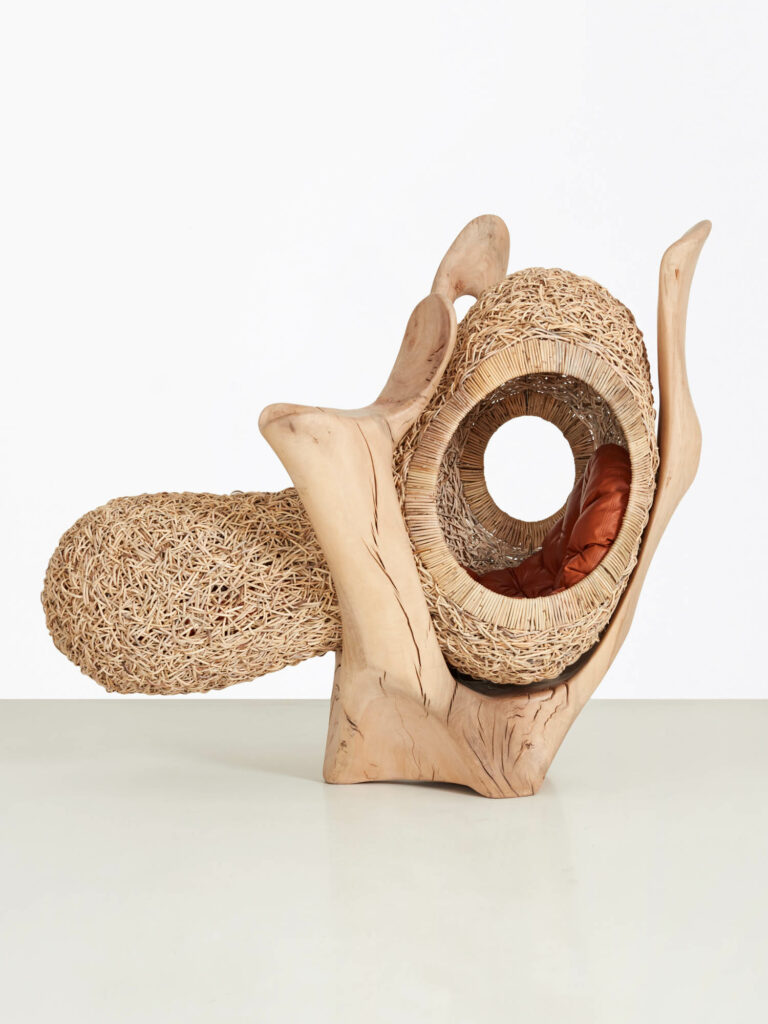
ID: Your aspect of materialism is so vast and elaborate. Do you intentionally flirt with different materials to relevantly make a piece whole?
PH: Yeah. I mean, what I’m trying to do is vernacular architecture, which is using stuff that is available around me. I work with the materials that are available around me and I think that’s more important than trying to stick with certain materials. I’m not the master of the skills that I work with. I can flirt with other materials. I can flirt with other techniques, because it just means me looking for the right person to make it rather than me having to learn how to make it. It gives me a lot more freedom in doing what I do.
ID: In your most recent exhibition at the Southern Guild, what inspired the chaos calamus?
PH: I always like to put Latin in because people then take it seriously. So Chaos is two parts. Chaos is an amoeba. It’s the biggest form of amoeba that’s around in the universe. The pieces are oozing as opposed to just being a straight circle, they’re starting to probe art with fingers—moving art into other shapes. So it’s about the movement of the amoeba. The amoeba is like the master shapeshifter. It can change the structure of its body and move in any direction. It evolves. So for me, that’s mind blowing.
And then calamus is the material that I use. It’s an incredible material from one of the most aggressive plants in a forest. It can grow from the bottom, where it’s very dark. In the forest that it grows in, there’s no light coming through the top because the trees are so big and closed. So this plant goes straight up in order to get its light. It’s an incredible plant. And I’ve come back to it now because I realize what an amazing material it is. It’s a natural material and there are not many people in the world that are using it.
ID: There is a weaponry of forms in the chaos calamus; are all of them seemingly to the likeness of amoeba or did you sort of want them to look nestlike ?
PH: Yes, all of them. But, I mean, it’s just a snapshot in an amoeba’s life. But for me, I want to feel like they’re moving. Moving, always changing. You never know if it’s the same one or another one. But I think also a big point was working with Adam Birch on the wood pieces, going back to a nest. It does give the feeling of a nest. Whenever they draw a nest in an old scientific illustration, they have to chop off the branch. And that’s kind of the image that I wanted, those sort of old fashioned illustrations of bird’s nest, when they sort of segment the branch so they can fit it in the page. Normally, my work is suspended, and I always try to experiment. Every time that I do something, I want to explore another avenue to see if it reveals anything. And this one was the wood. When it’s suspended, people think that it’s a toy, they think it’s for children, it’s a swing. They treat it rough. But in most situations, art and sculptures or statues are put on podiums. And they put them up and make them more important. This was my attempt to see what happens when I root to the ground and make it a far more typical sculptural form.
ID: How long did it take to make this piece and how will you describe the process?
PH: We did it from September to February. Four months. The process was amazing. Somebody that works with me said: “Wow, that’s one of the first processes you’ve ever been through without a single fight.” I really do work with people for their strengths, not for their weaknesses. Most people focus on people’s weaknesses and say, don’t do that. Don’t do this. Mine is more like, wow, that’s amazing. Go for more of that. It’s a far more positive thing where people are also expressing themselves. I give them that room to move and to do what they do, sort of a support, a balance to everything. And that’s my job as a creative director—to give people the responsibility, but also to ensure that it’s what you wanted in the first place.
ID: What has been your biggest challenge?
PH: Clients. I think less and less, not working with the client one-on-one. You’re working with a representative who is always second guessing or trying to predict or something. For one project that I did, which was a building in Namibia, working directly with the client was incredible. The project could be so organic, it could change as we built as opposed to in a normal situation where you have your building plans and your architectural plans and you can’t stray from those plans. That’s a very limiting factor in architecture, that approval processes on a sort of country level but also on the personal client level.
It’s difficult when people say they don’t understand where my work is from. It’s even harder for someone to buy that because when their buddy says: So why do you buy that 20 foot hippopotamus in your lounge? The buyer needs to have a good story. If it’s something that people recognize, it’s an easy story. Since my works are based on life forms, they are easily recognizable. I work with another lowest common denominator—nest, animal, puffer fish. It’s a very simple point for people to understand and then talk about it. That’s why children end up being my basic market. They [see a nest] and say ‘nest.’
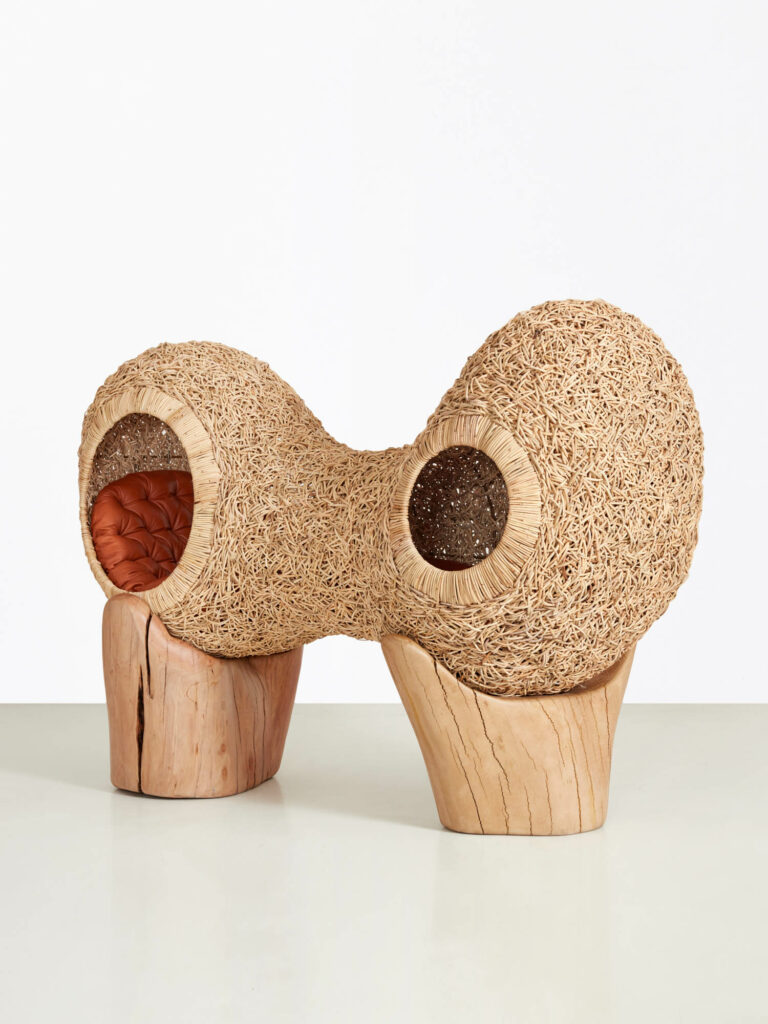

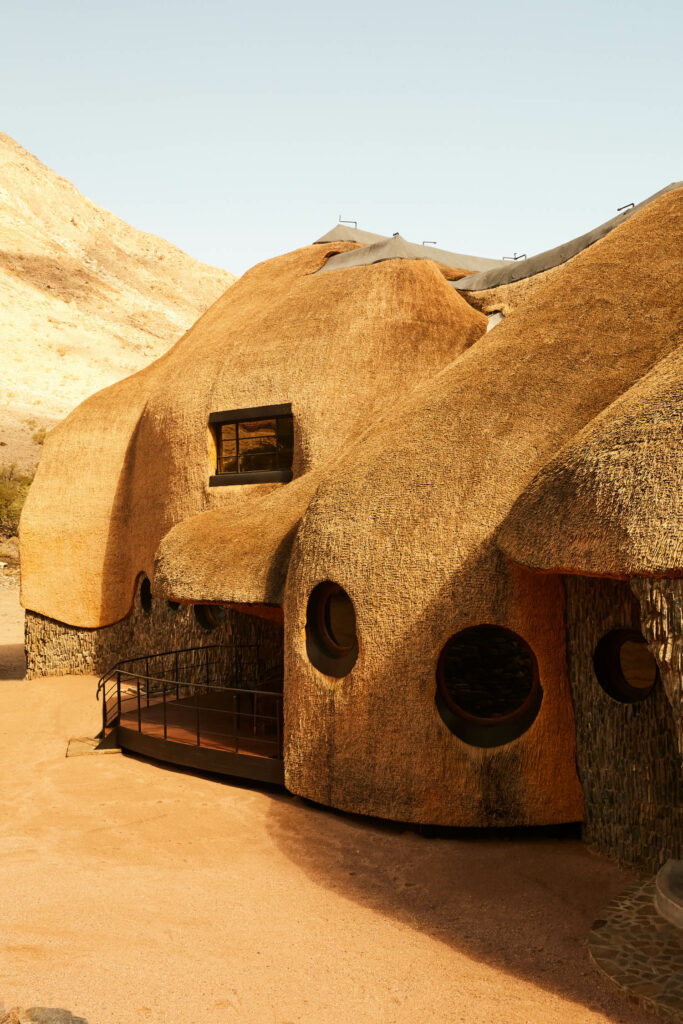
read more
DesignWire
10 Questions With… Siyanda Mazibuko
Furniture designer Siyanda Mazibuko crafts sculptural and functional afrofuturistic designs. See his latest collaboration with the American Hardwood Export Council.
DesignWire
Tapiwa Matsinde Showcases Contemporary Design and Craft from Africa Through the Written Word
British Zimbabwean writer and curator Tapiwa Matsinde uses narrative to promote contemporary design and craft from Africa and beyond.
DesignWire
Nandipha Mntambo’s Furniture Blurs Human and Animal Forms in a New Show at Capetown’s Southern Guild
Transcending Instinct, Eswatini-born and Johannesburg-based artist Nandipha Mntambo’s first solo show for Cape Town’s Southern Guild gallery, on view through April 8th, stretches her expertise into the realm of functi…
recent stories
DesignWire
7 Standout 2023 NYCxDESIGN Exhibits Worth The Buzz
Interior Design recaps a selection of the year’s outstanding NYCxDESIGN expositions, many of which are works by female-identifying designers and curators.
DesignWire
Meet the 2023 Gensler Brinkmann Scholarship Recipients
Emerging designers have a tall order to fill. See the 4 outstanding recipients of the 2023 Gensler Brinkmann Scholarship ready to take on the challenge.
DesignWire
10 Questions With… Josh Egesi
Minimalism is at the core of Nigerian designer Josh Egesi’s work. Here, he offers insights into his career, dreams, and design philosophies.
